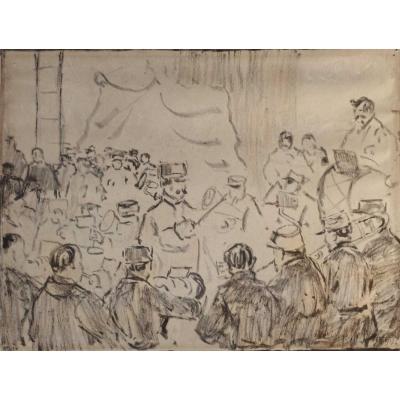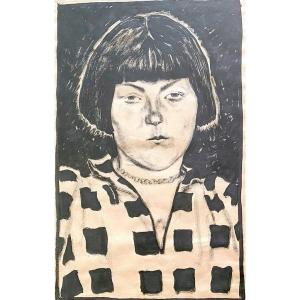VERCORS: JOURNEY OF A FREE THINKER, RESISTANT AND ANTI-COLONIALIST
Jean Bruller, born on February 26, 1902, in Paris, is a prominent figure in 20th-century French literature. Known by the pseudonym Vercors, which he adopted during World War II, he was a writer, illustrator, underground publisher, and committed thinker. His life and work are deeply marked by the major struggles of his century: the fight against Nazism and an early, courageous stance against colonialism.
Before becoming a writer, Jean Bruller first made a name for himself as a satirical illustrator. He contributed to publications such as Le Crapouillot, La Gazette des Lettres, and L’Illustration. His sharp drawing style and humor caught the attention of intellectuals, among them Pierre de Lescure, a writer and critic with whom he formed a lasting friendship. Together, in 1941, during the German occupation, they founded Les Éditions de Minuit, a clandestine publishing house that became a symbol of French literary Resistance. They anonymously published Le Silence de la mer (1942), a poignant short story that became a symbol of intellectual resistance.
Bruller/Vercors also developed ties with Jean Paulhan, André Gide, Jean-Paul Sartre, and Paul Éluard—major figures in 20th-century literature and political engagement. While remaining independent, he shared with them a belief in art as a vehicle for meaning, capable of awakening consciousness.
Other works followed after the war, always marked by ethical and humanistic reflection:
La Marche à l’étoile (1943)
Le Sable du temps (1946)
Les Animaux dénaturés (1952) – a major philosophical novel questioning the boundary between human and animal
Sylva (1961)
Colères enfin (1956) – in which his political commitment is particularly evident
An Anti-Colonialist Voice Since the Interwar Period
Bruller was one of the few intellectuals of his generation to openly oppose colonization as early as the 1930s, through little-known but insightful texts. He denounced the abuses of French imperialism and the contempt shown toward colonized peoples. This brave stance, which went against the dominant discourse of the time, was rooted in a deeply universalist way of thinking.
Here are two representative quotes of his anti-colonialist thought:
"There is no superior civilization when it imposes itself through guns and fear."
(Jean Bruller, unpublished speech, 1930s)
"Colonialism is not the light brought to the people; it is the shadow cast by our interests."
(Jean Bruller, letter to André Gide, 1938)
His anti-colonialism would resonate again in the 1950s and 60s, when he publicly criticized the Algerian War and supported independence movements.
Here, Vercors borrows the style of some of the most famous artists of his time to create six fictional poster designs for the Colonial Exhibition held in Paris in 1930. The delightfully biting captions emphasize the unjust nature of French colonization in Africa.
The “Moïse Kisling” project highlights a gaunt, visibly starving woman holding out a tray of oranges. The underlying message is a clear condemnation of the exploitation of African land, which goes hand in hand with the exploitation of its people.
Laurencin’s design is lighter and brings a smile, offering a touch of softness in an otherwise uncompromising work of denunciation. Bofa’s project is humorous too! It depicts metropolitan French people wearing colonial helmets, sitting at a café terrace. The stunned look on the waiter’s face draws our attention—as does the artist’s skill in capturing the elegant curves of Thonet chairs, rendered with a brush as fluid as his linework.
Georges Rouault’s design is the harshest. It shows the explicit violence of the colonized condition, presented just as it is. Unsurprisingly, these are not the kinds of images that were meant to be shown in the French mainland. That’s the very point of the caption.
Foujita’s piece is brilliantly inventive. The most famous Japanese artist in Montparnasse, sketchbook under his arm, walks past Le Dôme café. Montparnasse is his colony!







































 Le Magazine de PROANTIC
Le Magazine de PROANTIC TRÉSORS Magazine
TRÉSORS Magazine Rivista Artiquariato
Rivista Artiquariato